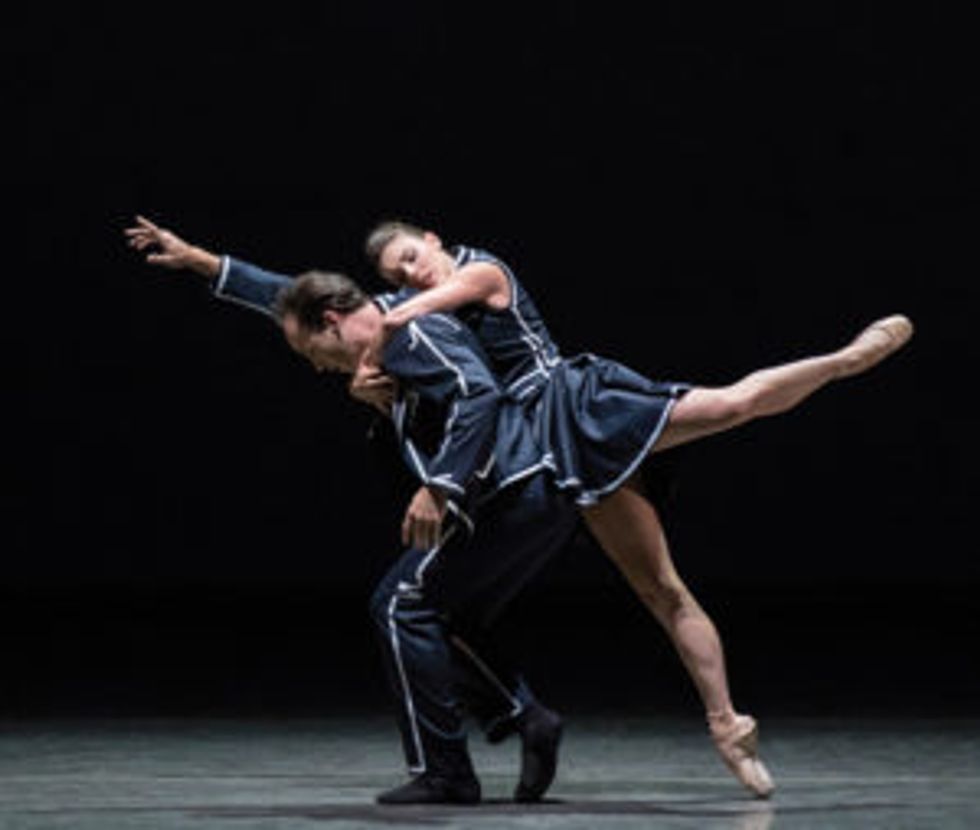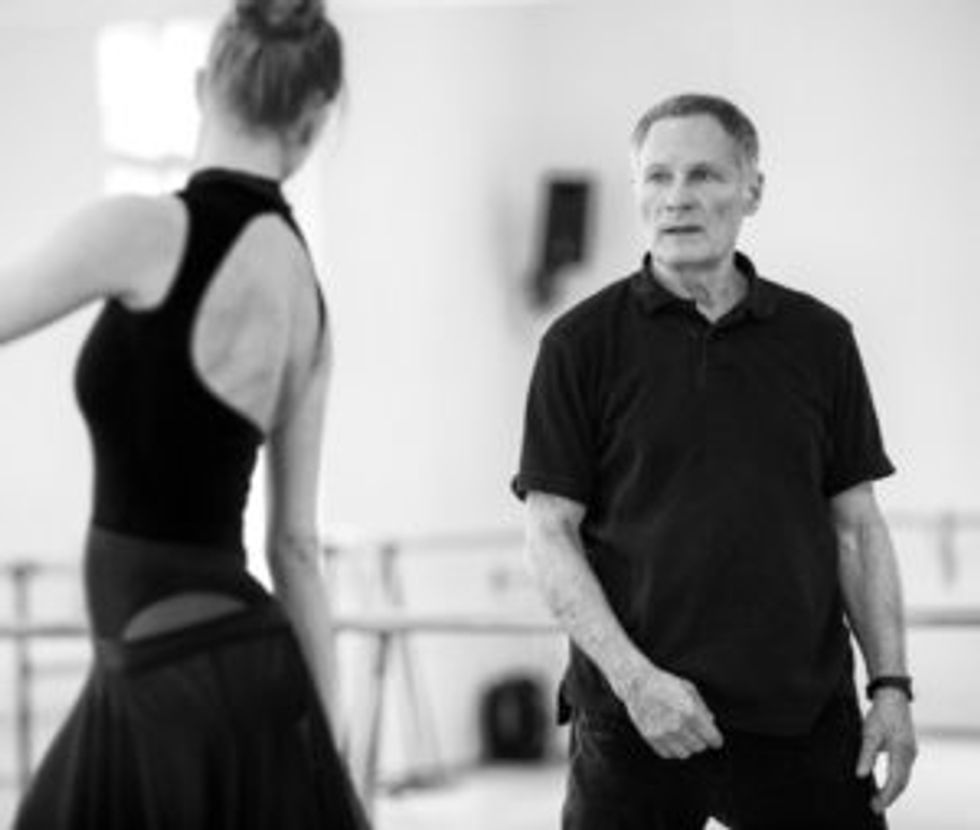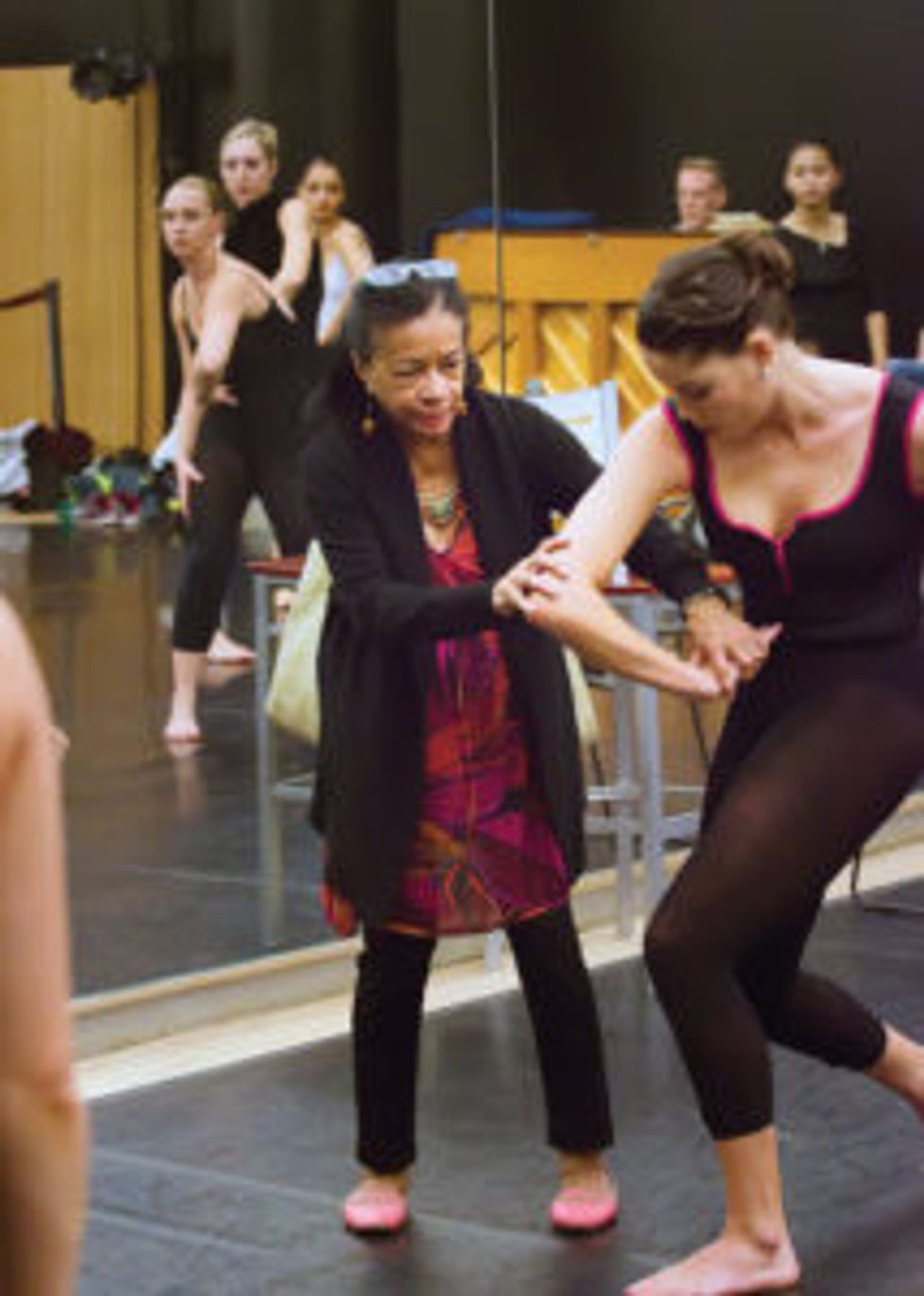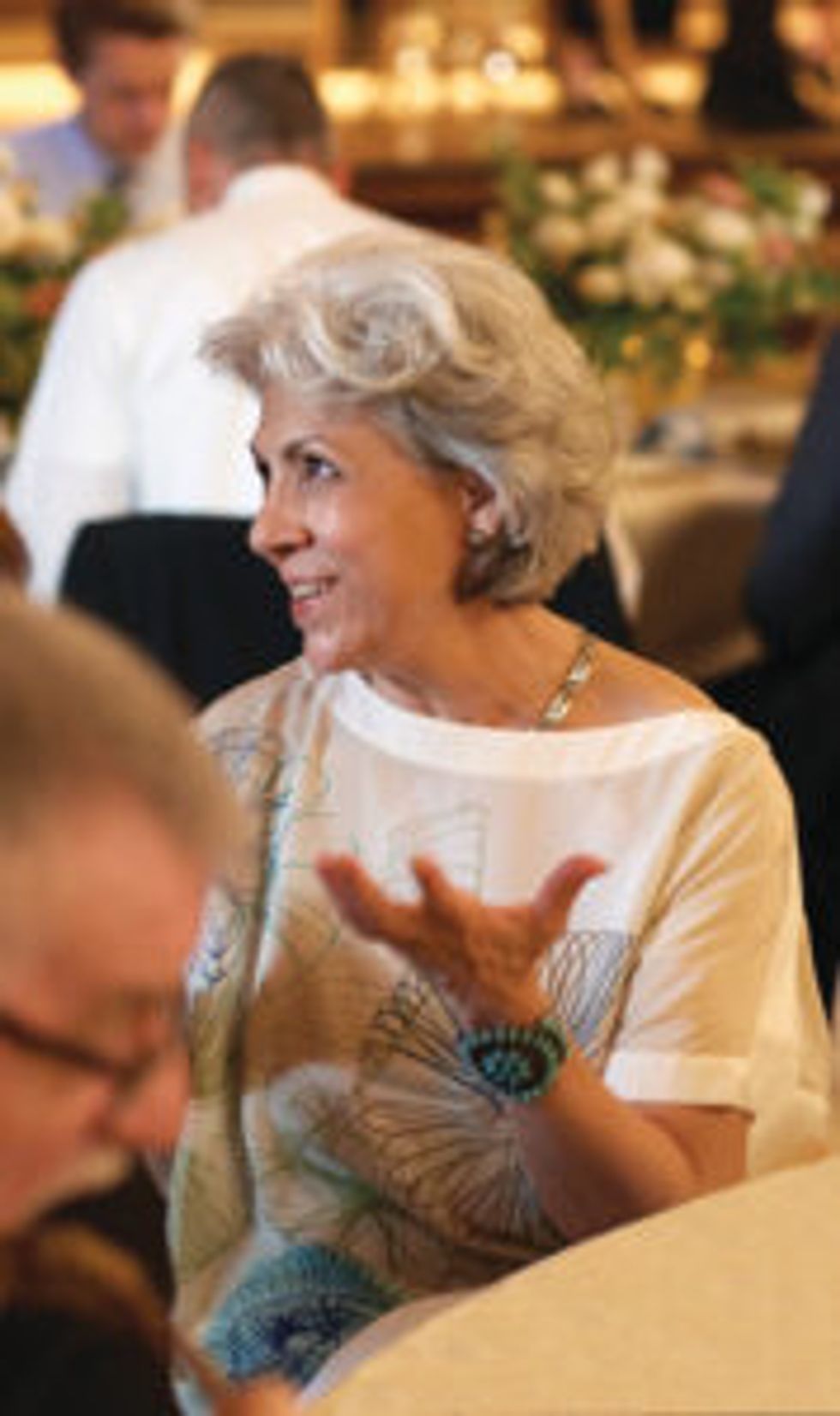2016 Dance Magazine Awards
This year we celebrate four extraordinary dance heroes: New York City Ballet principal Tiler Peck, choreographer Lar Lubovitch, activist/teacher Carolyn Adams and historian Lynn Garafola.
Tiler Peck
Tiler Peck transcends all preconceived notions about ballet: that it is old-fashioned or boring or mannered or quaint. To see this New York City Ballet principal dance “Fascinatin’ Rhythm” in Who Cares?, or Dewdrop in The Nutcracker, is to understand, immediately, that Peck has somehow bent the laws of physics in her favor. Her dancing weds pure movement intelligence with pure musical intelligence. And it calls attention to the choreography and the music in a new way—when she dances, you see new steps and hear nuances in the music you never noticed before.

With Tyler Angle in Annabelle Lopez Ochoa’s Unframed. PC Paul Kolnik, Courtesy NYCB.
And then there’s her range. Peck, who was born in Bakersfield, California, 27 years ago, started out as a jazz kid doing commercial work. She performed in a Broadway production of The Music Man at age 11, and the bug never left her. Two years ago, she starred in Little Dancer, a show Susan Stroman built around her. Peck appeared on Live from Lincoln Center in a production of Carousel with the New York Philharmonic. She has danced with Memphis jooker Lil Buck, clown extraordinaire Bill Irwin and contemporary dancers. She’s even been on “Dancing with the Stars.”
But it’s at New York City Ballet that she has made her most profound mark. Early on in her career—she joined the company as an apprentice at 15 and became a principal at 20—some wrote Peck off as a technical whiz kid with little to say. But NYCB star Damian Woetzel noticed her right away, and picked her to be his partner in Christopher Wheeldon’s version of Carousel. He encouraged her to dance more freely and give in to her theatrical instincts. Boy, did she listen. As he puts it, “Her musicality, ease, daring and willingness to quite literally try anything is expanding and elevating dance in front of our eyes.”
With each new role she takes on, she subtly shakes off dust and cobwebs, revealing the essence of the ballet anew, as if the steps had been made for her. Like a jazz musician, she bends the beat. She says, “I like to play with the music when I’m onstage. It’s like a game, and that’s what makes it exciting.”
This makes her irresistible to choreographers. Justin Peck, the choreographer in residence at NYCB, has made some of his most challenging roles for her. Wheeldon has tapped into her all-American qualities—pluckiness, lack of affectation—in works like Estancia and Les Carillons. Liam Scarlett capitalized on her theatrical flair in Funérailles. Whatever gauntlet they throw her way, she exceeds it.
—Marina Harss
Lar Lubovitch

Rehearsing The Bronze Horseman with dancer Angelina Vorontsova at the Mikhailovsky Ballet. PC Stas Levshin, Courtesy LLDC.
The dance world may be small, but the branch of its family tree made by Lar Lubovitch is expansive. First there’s his modern troupe, Lar Lubovitch Dance Company, an incubator for his work since 1968, where former company members include choreographers Doug Varone and Darrell Grand Moultrie, and international performer Drew Jacoby. Then there are Lubovitch’s dances in the repertoires of countless modern and ballet companies, not to mention his creations for Broadway, Olympic ice-dancing routines and the Chicago Dancing Festival, which he co-founded. “It’s a chance to get out of myself,” says the soft-spoken Lubovitch of the variety in his career, “to not get stuck in one idea of who I am or what I do.”
At 73, the master dancemaker is still treading new ground: His two-act, 28-dancer The Bronze Horseman premiered at the Mikhailovsky Ballet in St. Petersburg in May. “Each time I make a dance, I feel like there’s something more to discover,” says Lubovitch. “It’s always an effort and a mystery. It’s compulsive to see if I can do it better.”
Although he started making up dances as a kid, Lubovitch didn’t pursue choreography professionally until he saw José Limón’s company as an art student at the University of Iowa. “I didn’t realize it was something that people actually did with their lives,” he says. He transferred to Juilliard, where he studied under dance giants like Limón, Martha Graham and Antony Tudor.
Today, Lubovitch’s polished, yet vulnerable work melds his signature musicality with sweeping movement and seamless, intriguing partnering. “His movement feels so delicious,” says choreographer and former Lubovitch dancer Katarzyna Skarpetowska. “His dances are true dancers’ dances.”
This year, Lubovitch has become a distinguished professor at the University of California, Irvine; been named one of America’s Irreplaceable Dance Treasures by the Dance Heritage Coalition; and received the Samuel H. Scripps/American Dance Festival Award for lifetime achievement. Unsurprisingly, he continues to explore new avenues: This fall he organized NY Quadrille, transforming The Joyce Theater into a raised stage flanked by the audience, for a series of world premieres by downtown dancemakers Pam Tanowitz, RoseAnne Spradlin, Tere O’Connor and Loni Landon. —Madeline Schrock
Carolyn Adams

Teaching a Taylor technique class at The Ailey School. PC Kyle Froman.
Paul Taylor, in his autobiography Private Domain, describes Carolyn Adams’ dancing—and personality—as “unmannered and wondrous…an elegant nectar laced with warm delicacy, easy and effortless.” For 17 years Adams charmed the world dancing with his Paul Taylor Dance Company. Her incredible range and effervescent style are evident in the roles she created in masterpieces such as Esplanade, Arden Court, Cloven Kingdom and Big Bertha.
But Adams, 72, says that her biggest “calling” is as a teacher. Those skills were honed early, as was her sense of activism. During her Taylor tenure, she and her sister Julie Adams Strandberg established The Harlem Dance Foundation in their childhood home with a mission to “nurture an endangered art form in an endangered community.” For 20 years they produced performances and developed arts-education programs aimed at integrating dance across generations.
Since retiring from the stage in 1982, Adams has taught at some of the country’s most prestigious dance programs—most notably 27 years at Juilliard. She has also served as director of education at Jacob’s Pillow, and is the founding artistic director of the New York State Summer School of the Arts School of Dance. She currently teaches at The Ailey School, and also serves on Taylor’s board of directors. (A natural-born nurturer, at the age of 58, Adams and her husband—former Taylor dancer Rob Kahn—adopted two children from Azerbaijan.)
Of all her accomplishments, Adams is most proud of the Repertory Etude program at the American Dance Legacy Initiative, which she established with her sister. Housed at Brown University, ADLI’s mission is to foster appreciation of America’s rich dance heritage. The “etudes” are short commissioned dances distilled from signature historical works available for dancers to study and perform. “As time passes,” Adams says, “I am acutely aware of how we are connected intergenerationally. How it holds value, and that we must remain linked!”
Her work at ADLI has included people with Parkinson’s disease and autism spectrum disorders. Adams’ work with Artist and Scientists as Partners (ASaP) advocates for diverse medical and arts practices. “More than a think tank, we focus on process,” she explains. “I am fascinated by how movement keeps the brain alive. When focused on learning, we concentrate on what we can do, not what we can’t.”
That’s the optimistic sentiment she has always adhered to, according to Robert Battle, artistic director of Alvin Ailey American Dance Theater, who considers her a mentor and confidant. “She has always concentrated on what is there rather than what isn’t. She has a way of distilling information that lets you own it. She doesn’t say ‘Do it this way,’ rather ‘Think about it this way’—for instance, that by simply lifting your arm you are connecting to the entire universe.”—Rachel Berman
Lynn Garafola

Garafola is one of the world’s leading dance historians. PC Christian Oth Studio, Courtesy Garafola.
As a student at Barnard College, I would walk into Lynn Garafola’s office hours with a tentative question on my mind, in need of scholarly direction. Forty-five minutes and a few bookshelf consultations later, I’d emerge with pages of notes and a revamped appreciation for dance history, newly inspired to examine Isadora Duncan’s feminism or race in the work of Ted Shawn.
A meticulous researcher, a treasured professor and one of the world’s leading dance historians, Garafola possesses an encyclopedic knowledge of her field, made even more expansive by her generosity in sharing it. (Since graduating and becoming a faculty member in Barnard’s department of dance, I haven’t stopped learning from her.) Through her vast body of work, most notably her acclaimed 1989 book Diaghilev’s Ballets Russes, she has helped to establish new standards of rigor in dance scholarship, viewing the art form’s elusive past as inseparable from its cultural, social and economic contexts.
A New York native, Garafola grew up studying ballet with the Armenian teacher Madame Seda (whose pupils also included Jacques d’Amboise). She trained with Alvin Ailey, at a studio owned by a former dance partner of the Hollywood choreographer Jack Cole, and later with the modern dancer Janet Soares as an undergraduate at Barnard, where she majored in Spanish and has taught for 16 years. (She becomes a professor emerita in July.)
“So many intertwined paths,” Garafola says of her teachers. “I guess that’s why I’m a historian. I love to follow those threads and imagine the lives behind them.”
Her interest in writing about dance and dance history flourished in the 1970s as she began pursuing a Ph.D. in comparative literature. When a friend asked why she was researching the picaresque novel, considering that she was attending dance performances all the time, she gave the question serious thought and changed her dissertation topic to the Ballets Russes.
In addition to writing and editing numerous books—including a forthcoming history of Bronislava Nijinska—Garafola has written for Ballet Review, Dance Research Journal and The Nation, among many other publications. She has been a Dance Magazine contributor since 1985.
If you want to feel excited about the future of dance scholarship, attend a presentation by Garafola’s thesis advisees, in whom she fosters the same passion, integrity and respect for the discipline that characterize her own work. As she puts it, “I believe it’s essential for students who spend much of their lives dancing to have some idea of where they come from, of how they exist and engage with the larger society around them.” —Siobhan Burke




